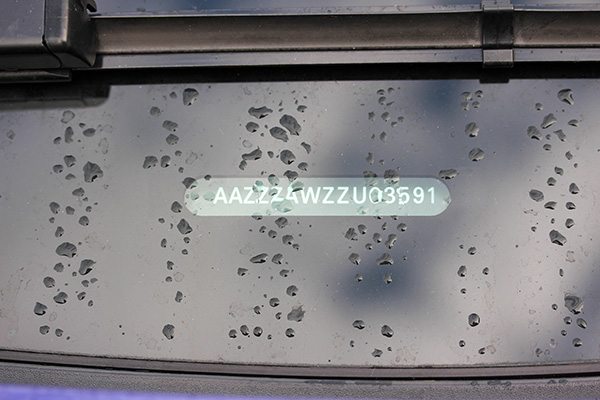
A Vehicle Identification Number (VIN) may look like a random string of characters at first glance, but it's packed with valuable information about your car. Whether you’re buying a used vehicle or just want to learn more about your own, decoding the VIN can give you insight into everything from where the car was built to its engine type. Let’s walk through how to decipher this code and what each section means.
What is a VIN
The VIN is a unique 17-character code assigned to every vehicle, acting as its fingerprint. This alphanumeric code contains crucial details that can help you verify the car’s history, specifications, and more. A VIN can be found in multiple places on your car, including the dashboard (visible through the windshield), the driver’s side door frame, or under the hood. But what do all these letters and numbers actually mean?
The VIN is divided into three main sections, each revealing specific information:
World Manufacturer Identifier (WMI)
First Three Characters The first three characters of a VIN tell you who made the car and where it was built. These are known as the World Manufacturer Identifier (WMI). The first character indicates the country of origin. For example:
- 1, 4, or 5: USA
- J: Japan
- W: Germany
The second character represents the manufacturer. For example, "B" might stand for BMW, while "H" could indicate Honda. The third character can signify the division within the manufacturer or the vehicle type, helping to further identify the car's origin.
Vehicle Descriptor Section (VDS)
Characters 4 to 8 This section provides detailed information about the car’s model, body style, engine type, and more. Each manufacturer uses this part of the VIN to encode specific details about the vehicle, though the exact meaning of these characters can vary between automakers. For instance, one vehicle might use the seventh character to indicate whether it’s a coupe or sedan, while another might use it to define its engine type.
Vehicle Identifier Section (VIS)
Characters 9 to 17 The final section of the VIN contains unique details about the car, including the production year, assembly plant, and the vehicle’s serial number.
- Ninth Character: This is a “check digit” used to validate the VIN’s authenticity. It’s calculated using a specific formula that manufacturers follow.
- Tenth Character: This tells you the car’s model year. For example, "A" represents 1980, "B" represents 1981, and so on, with the letters continuing up to "Y" for 2000. After that, numbers are used (e.g., "1" for 2001).
- Eleventh Character: This character shows where the vehicle was assembled. Each manufacturer has a unique code for its assembly plants.
- Characters 12 to 17: These are the car’s serial number or production sequence. This is the unique number assigned to the specific vehicle as it came off the production line.
How to Use the VIN for Vehicle History and Recalls
Once you've decoded the VIN, you can use this information to uncover even more about the car's history. Inputting the VIN into a vehicle history report service (such as Carfax) can reveal if the vehicle has been in any accidents, undergone major repairs, or had its title marked as salvaged. Moreover, checking the VIN on the National Highway Traffic Safety Administration (NHTSA) website allows you to see if there are any unresolved recalls for that specific vehicle.
Why VIN Decoding is Important for Used Car Buyers
If you're in the market for a used car, decoding the VIN is essential. It ensures that the car’s details, such as engine type, transmission, and model year, match the seller's description. This can help you avoid purchasing a car with misrepresented specifications or hidden issues. For example, the VIN might show that the car was originally equipped with a different engine than what’s currently installed. Similarly, the VIN can reveal if the vehicle was involved in any major accidents or if it's subject to any outstanding recalls, which could save you from costly repairs down the line.
Tips for Decoding Your VIN
If you're ready to decode your car's VIN but don't want to do the math manually, there are plenty of online tools that can simplify the process. Websites like the NHTSA and vehicle history report services offer VIN lookup tools where you can enter your VIN and get detailed information within minutes. These services can be especially helpful if you're buying a used vehicle, as they often provide additional data like odometer readings, past owners, and more.
Stay informed about your car! Come to Foreign Auto Services for professional maintenance, detailed VIN analysis, and top-notch customer service. Your vehicle’s safety and performance are our priority.